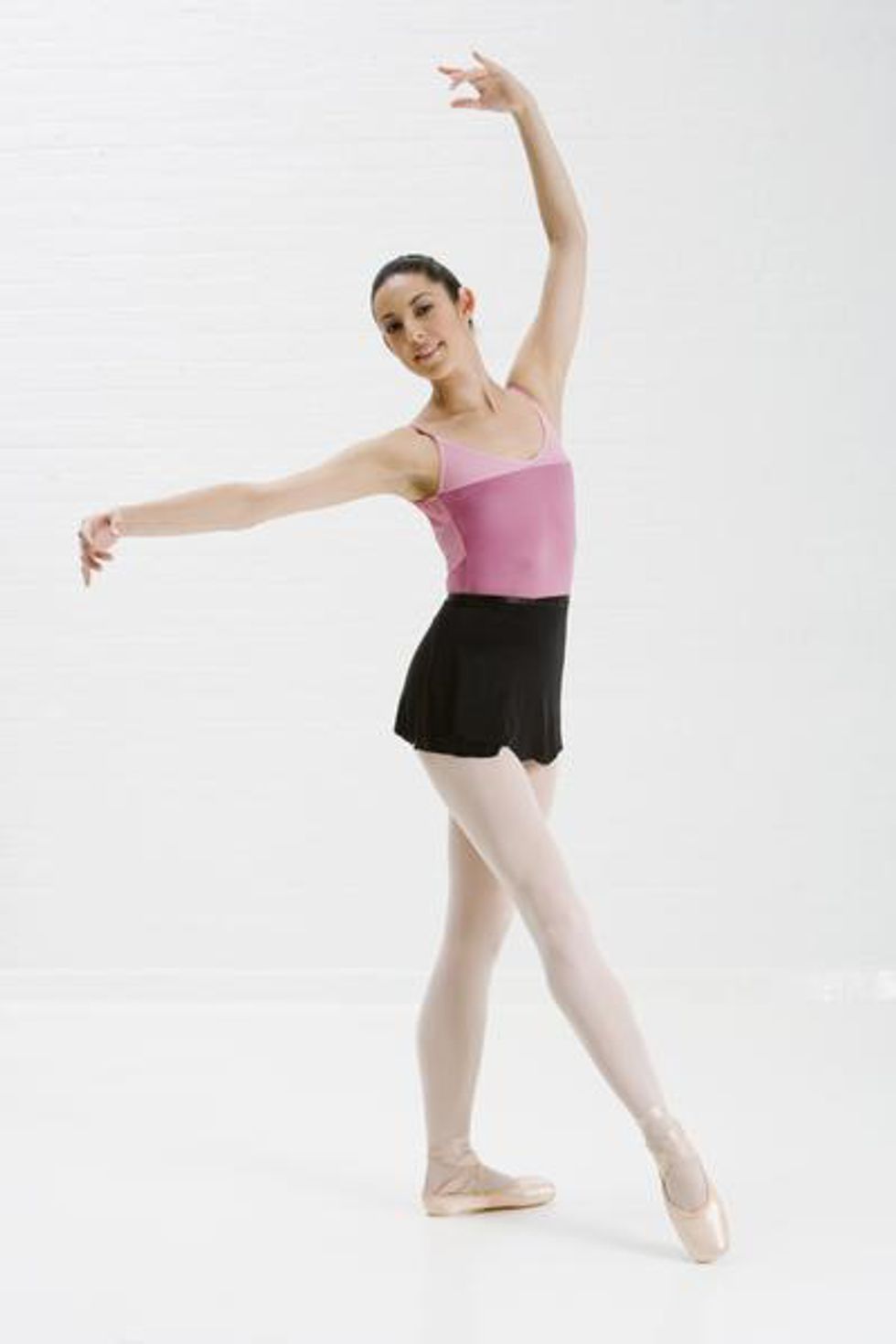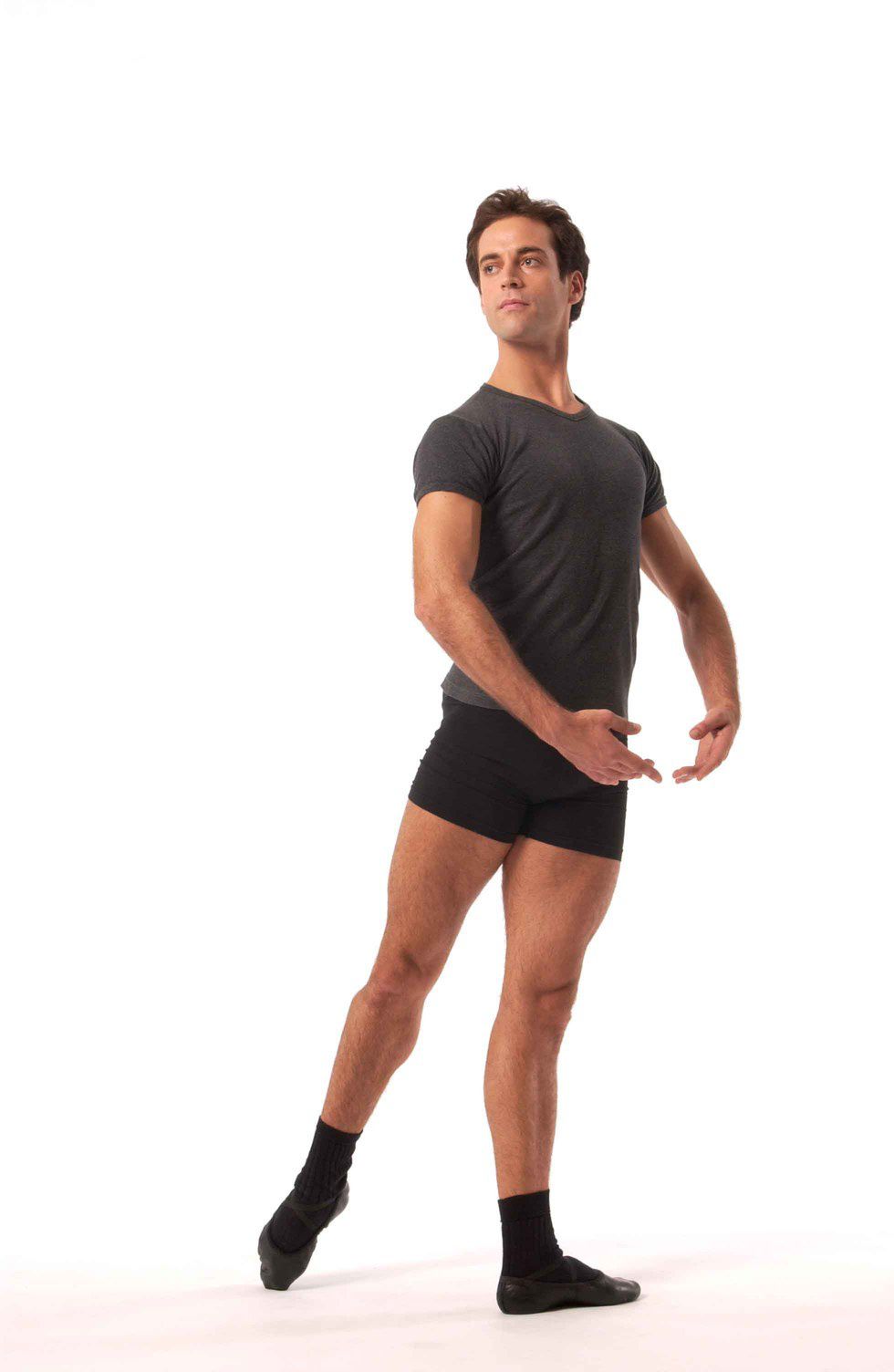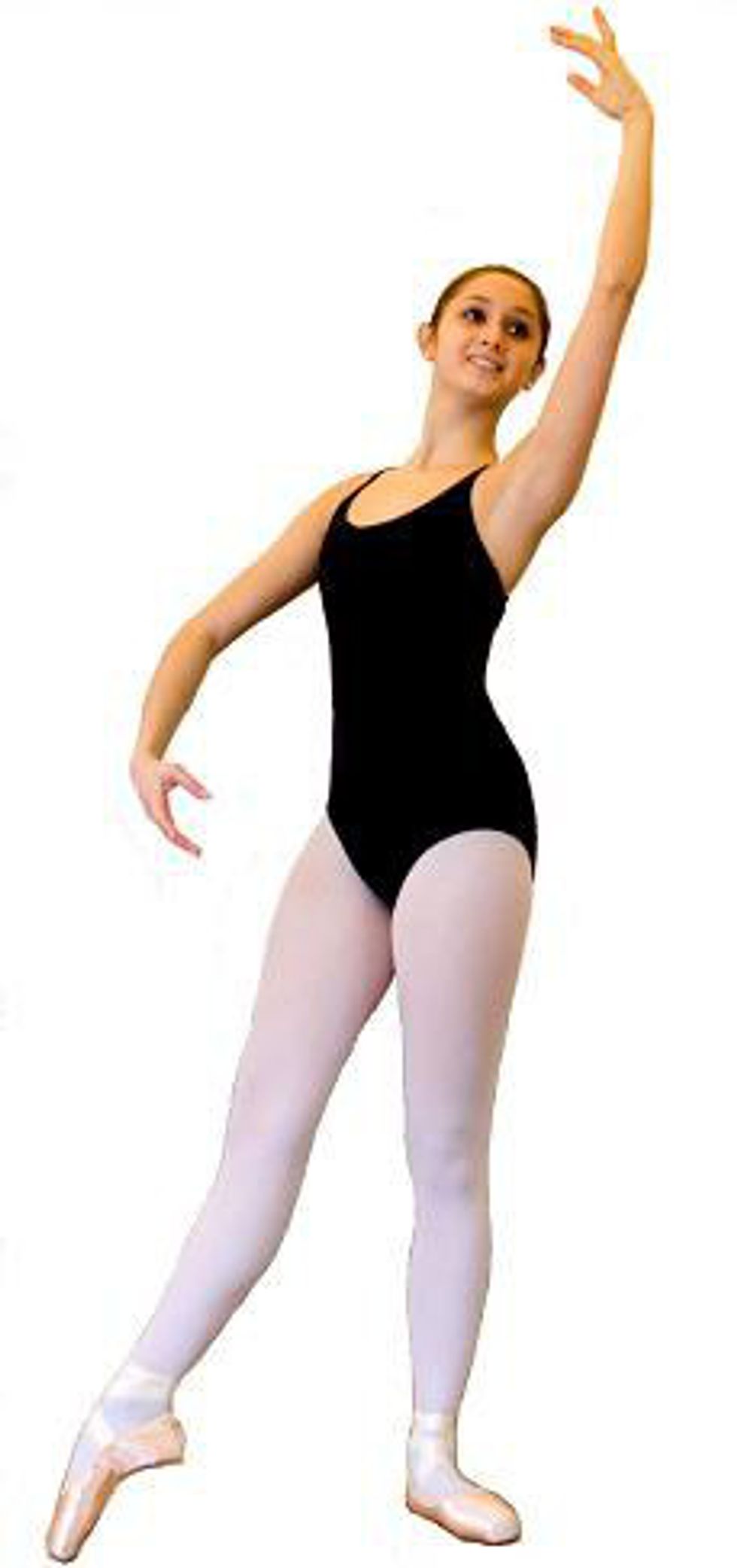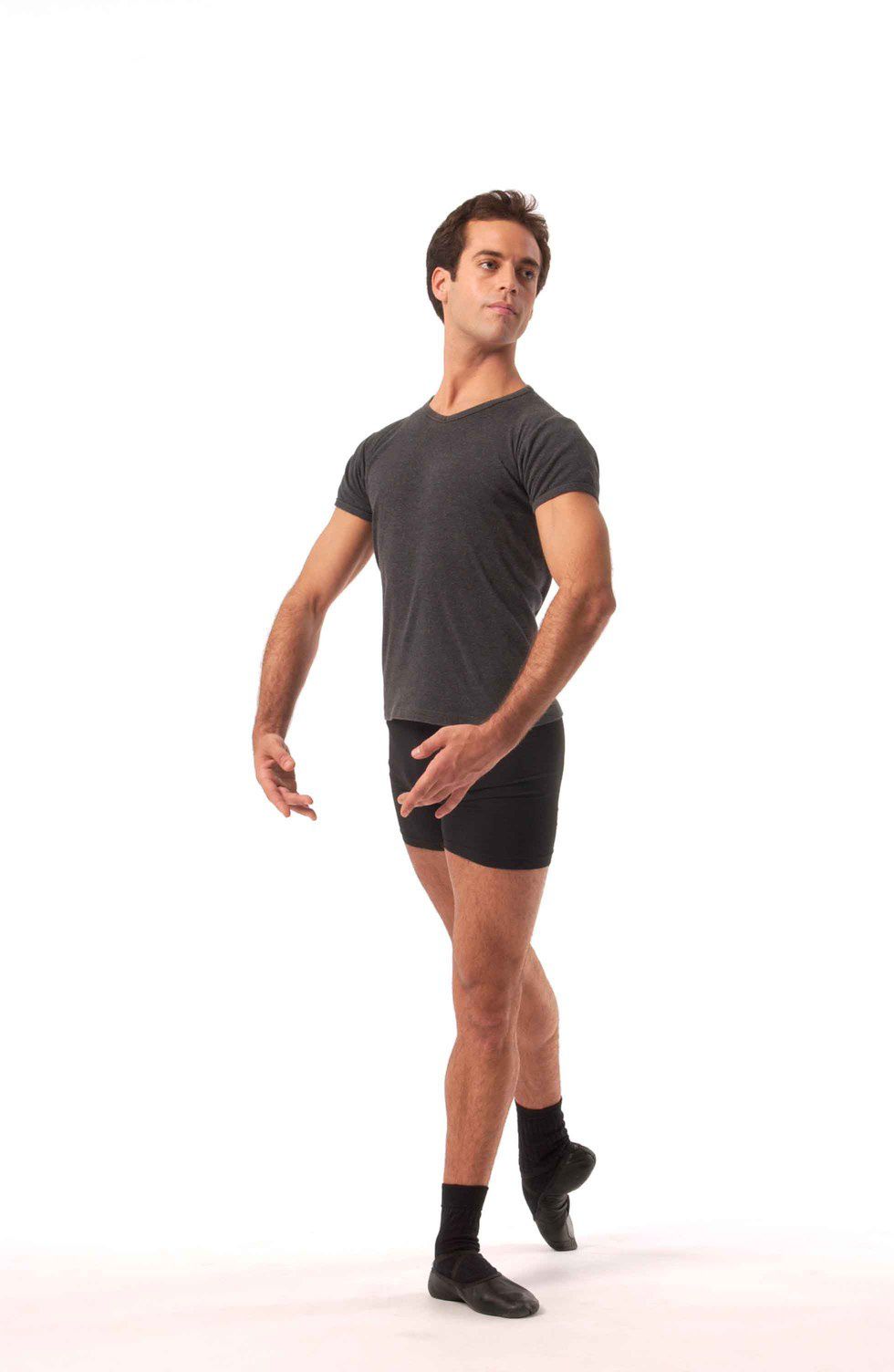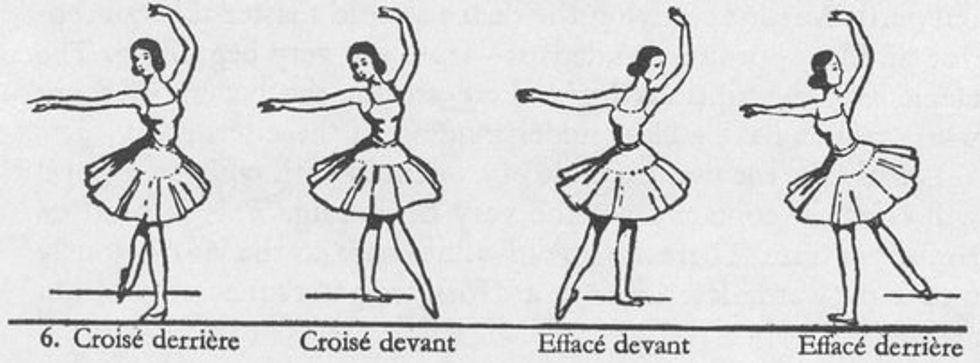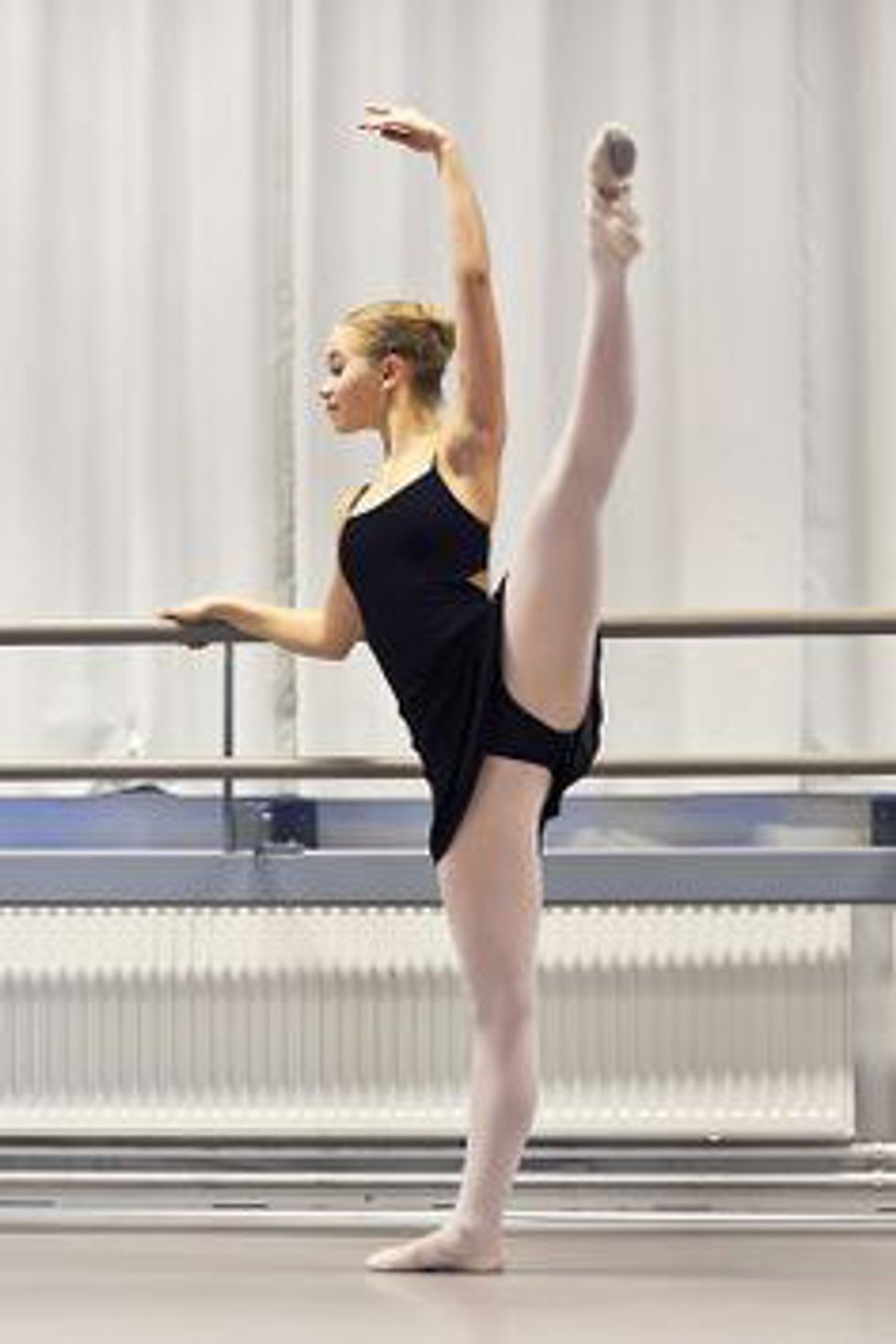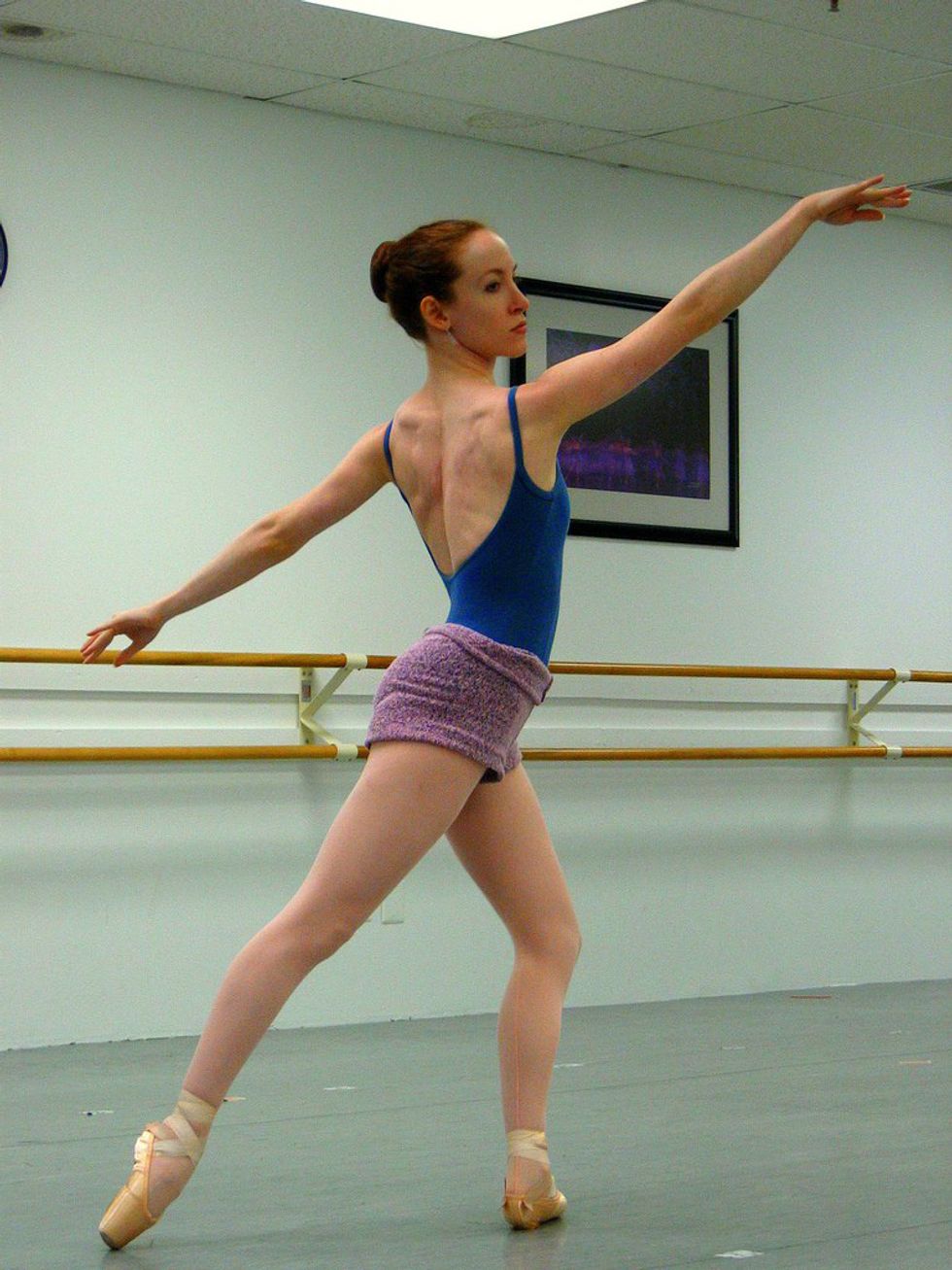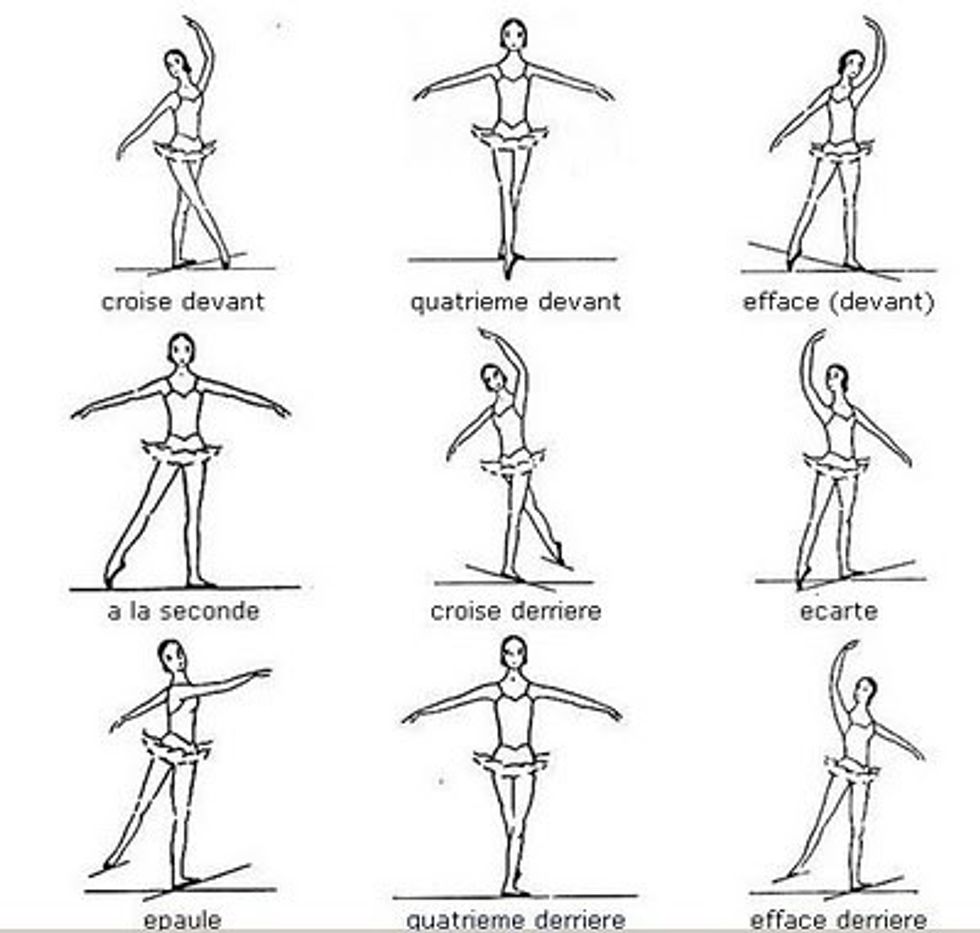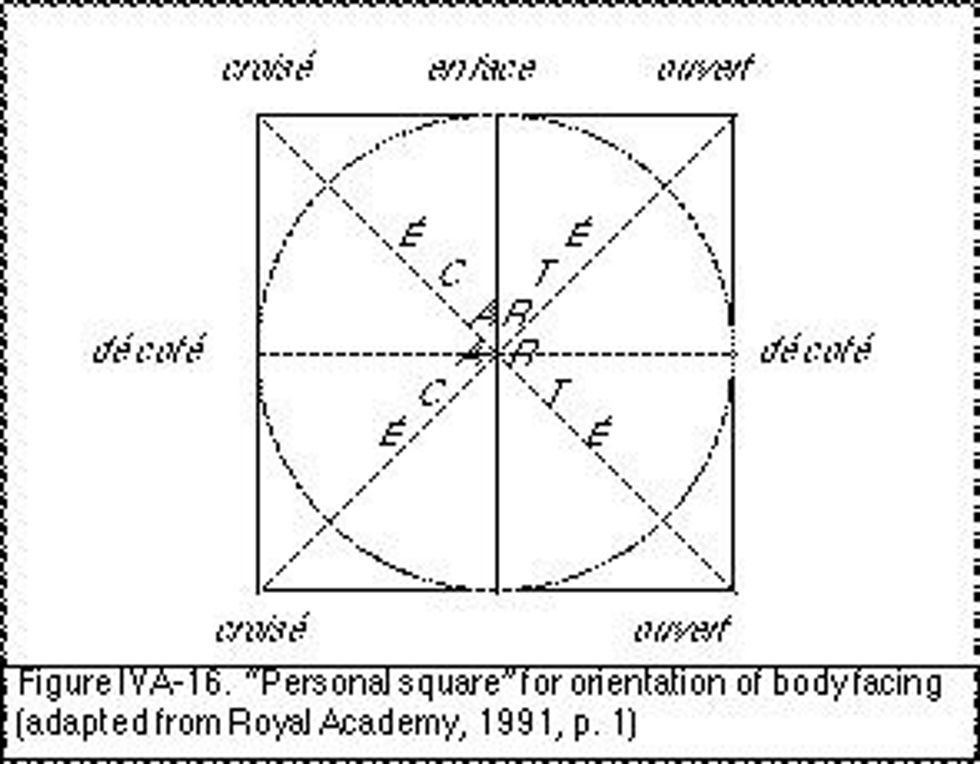Learning the directions and facings of the body in ballet is very important. Dancers must know where their body is in space in order to create the line they want. Please note, hips and shoulders should stay square in all the different directions/facings.
1. En Face
En face means opposite (the audience) or facing the audience. Both hips and shoulders are square to the audience.
2. Croisé
Croisé means crossed. This is in reference to the legs and the audience. The legs can be in fifth, fourth, devant (front) or derrière (back). In the image below, the dancer is showing croisé devant (crossed to the front).
3. Effacé
Effacé means shaded. Another word commonly used is "ouvert." Effacé is also in reference to the legs and audience. From the audience view, the legs are open, as opposed to crossed. The dancer below is showing effacé derrière (shaded to the back).
4. Devant
Devant means to the front and refers to the placement of the leg or to a movement of the dancer. In the image below the dancer is showing effacé (shaded/open) devant.
5. Derrière
Derrière means to the back. This also refers to the leg or movement of the dancer. In the image below the dancer is showing croisé (crossed) derrière.
Take a second to look at the image below. It show the facings we just discussed (numbers 2-5).
Croisé derrière (crossed back), Croisé devant (crossed front), Effacé devant (shaded/open front) and effacé derrière (shaded/open, back).
6. À la seconde
À la seconde means to the second. This refers to the leg or movement going through second position, as shown below. The leg can also be en l'air (in the air).
7. À la Quatrième
À la quatrième means to the fourth. This can be done devant or derrière.
8. Écarté
Écarté means separated or thrown wide apart. In this position, the dancer faces one of the front two corners of the room. The leg is à la seconde (to the seconde), as discussed above. The leg can be the one closest to the audience (devant) or furthest from the audience (derrière). The dancer below is showing écarté derrière, also en l'air (in the air). In écarté derrière, the head usually looks away from the leg and arm. In écarté devant, the head usually looks towards the leg and arm.
9. Épaulé/Épaulement
Épaulé means shouldered and épaulement means shouldering. The two placements of épaulé are croisé and effacé. It refers to the placement of the head and shoulders.
10. De Côté
De Côté means sideways. This refers to movements or step that go to the right or to the left.
The image below shows the positions in reference to each other.
The image below shows the facings of the body from the Royal Academy. They use the term ouvert instead of efface.





